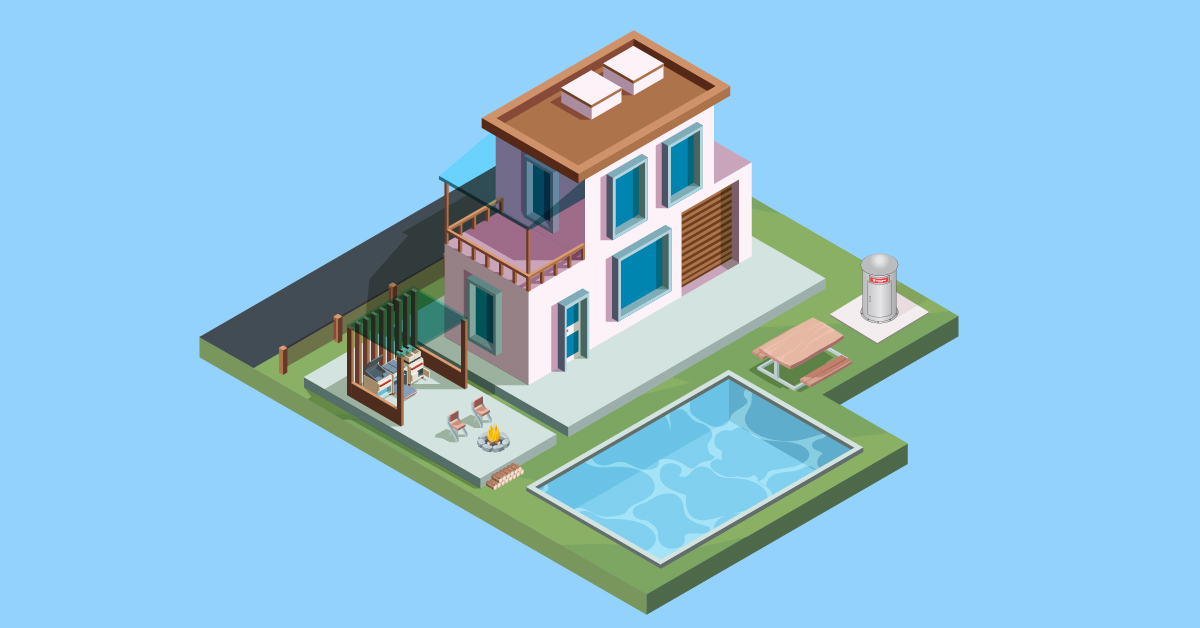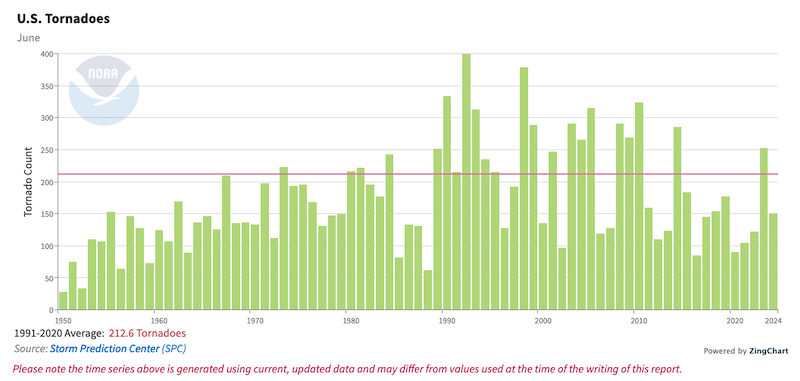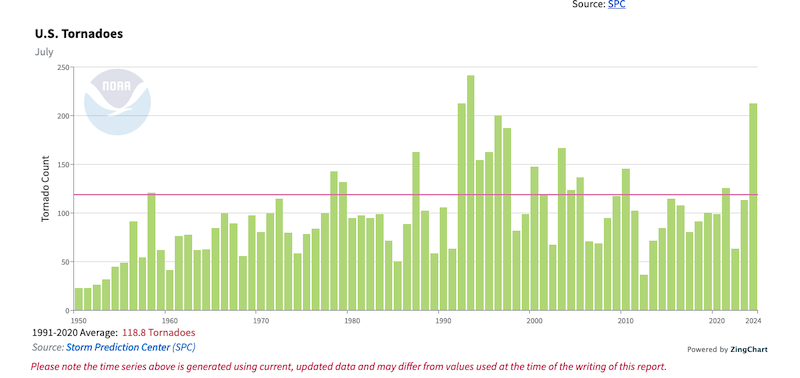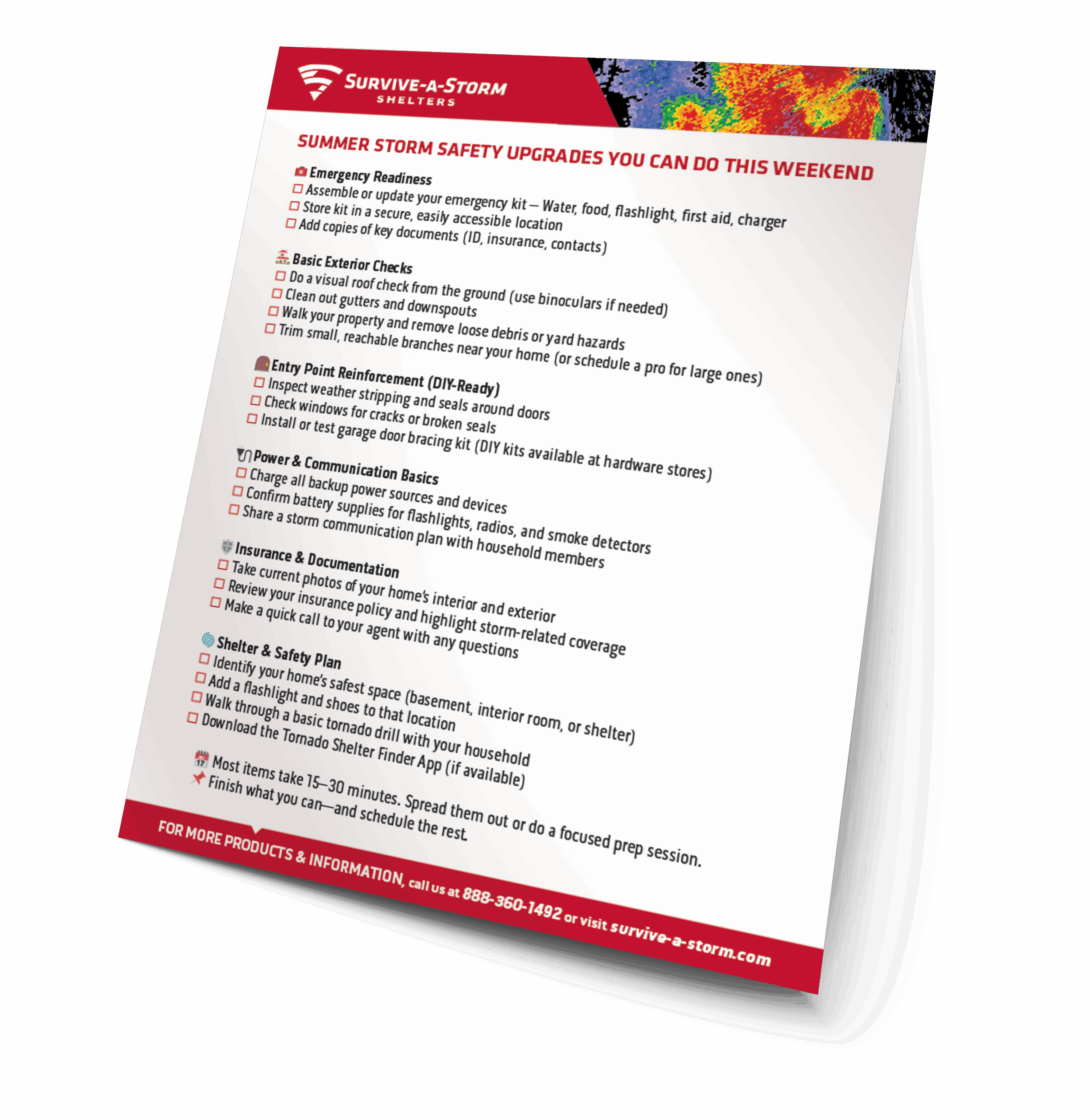CATEGORIES:
Summer Storms And Why Tornado Season Isn’t Over Yet
June 13, 2025

Think Tornado Season Ends in Spring? Think Again.
For many homeowners, tornado season feels like a springtime concern, something that peaks between March and June and then fades away with the heat of summer. Late summer tornadoes are not a fluke, they’re part of the normal seasonal shift. Waiting until next spring to prepare may be too late.
Let's take a look at how risk-averse homeowners can stay protected.
According to NOAA, while spring sees the highest tornado counts nationally, tornadoes continue well into summer and even fall, particularly in the northern Plains, Midwest, and Great Lakes regions. In fact, June and July often bring spikes in tornado activity in states like Iowa, Illinois, and Minnesota. Here's a look at the number of June tornadoes in the US, from 1950-2024:

The Summer Surge: Why Late-Season Tornadoes Are Rising
Tornadoes don’t vanish after June, they simply shift with the weather pattern. As warm, moist air from the Gulf pushes farther north during summer and meets cooler air from Canada, conditions for severe storms remain dangerously active.
NOAA’s Storm Prediction Center has tracked multiple late-season outbreaks in recent years, some with devastating consequences. The numbers start to decrease in July, as seen in this graph of July tornadoes in the US, from 1950-2024:

So, while frequency may slightly decline post-June, the severity and unpredictability of late-season tornadoes still pose a major threat, especially to homeowners who think the worst has passed.
🎯 Risk-averse homeowners understand that real protection means staying ahead of seasonal trends—not reacting to them.
What Most Homeowners Miss About Mid-Year Storm Threats
It’s not just the tornadoes themselves. Summer storms bring a perfect storm of threats:
- Wind and hail damage
- Roof and siding damage
- Flash flooding
- Power outages and food spoilage
- Broken windows and debris impacts
The biggest mistake? Assuming you’re safe just because spring is over.
🧠 Loss aversion bias means we’re wired to fear losing something we already have, like a home or hard-earned investment. Yet many don’t act until it’s too late.
✅ Quick Readiness Checklist
Ask yourself:
- Do I have an up-to-date emergency kit?
- Have I inspected my roof and gutters?
- Do I have coverage for hail or flood damage?
- Have I reinforced vulnerable entry points?
If you answered “no” to any of these, you’re not alone but it’s time to act.
How One Overlooked Week Can Cost You Thousands
In storm-prone areas, just one unexpected thunderstorm can cause thousands of dollars in damage. Torn shingles, broken windows, water intrusion—these aren’t just inconveniences. They’re financial hits.
According to insurance data, wind and hail account for the majority of storm-related claims in the summer months, and insurers have taken note. Increases in claims can raise premiums or limit future coverage.
And if you're thinking, “It probably won’t happen here,” that’s anchoring bias at work, or, in simple terms, underestimating a potential high-impact event based on past experience.
💡 Don’t let one missed week erase years of home equity.
3 Simple Safety Upgrades You Can Still Make This Month
 Update or assemble your emergency kit.
Update or assemble your emergency kit.
You don’t need a full remodel to boost your home’s storm resilience. These low-barrier upgrades reduce risk fast:
- Include water, non-perishables, a flashlight, first aid kit, and a backup phone charger.
- Reinforce your garage door. It’s one of the most vulnerable points in high wind. Use a retrofit kit or professional brace system.
- Inspect and clear your roof drainage. Blocked gutters or loose shingles can turn a storm into a major water damage claim.
✅ Downloadable Checklist: Summer Storm Safety Upgrades You Can Do This Weekend
🎯 Commitment and consistency are key: even one step forward restores control and lowers anxiety.
How Weather-Smart Homeowners Stay One Step Ahead
It’s easy to feel reactive with weather, but those who stay proactive avoid regret.
Take this real homeowner story from Missouri:
“We thought tornado season was over but in July, a surprise storm ripped through our area. Our neighbors had roof damage, but we’d just reinforced ours. That decision saved us thousands.”
Stories like this aren’t rare, they’re growing.
Preparedness is no longer just about surviving a storm, it’s about preserving your financial future and your peace of mind.
🧠 Social proof tells us this: The people who prepare don’t regret it. The ones who don’t? Often wish they had.
What to Ask Your Insurance Provider Before the Next Storm
Most homeowners only look at their policy after a storm hits. Smart homeowners ask these questions before the next system rolls in:
- Do I have full coverage for wind and hail damage?
- Are there separate deductibles for windstorms or hurricanes?
- Is flood insurance included or optional?
- Are there discounts for reinforcements or storm shelters?
- How would a claim affect my future premium?
📞 One 15-minute call could reveal critical gaps or unlock savings you didn’t know you had.
Ready, Not Reactive: Turn Uncertainty Into Confidence
You can’t control the weather, but you can control how prepared you are when it turns.
This isn’t fear-mongering. It’s just the math of risk vs. reward.
One weekend of preparation now can protect your roof, your budget, and your long-term peace of mind. Make the decision that smart homeowners are already making—before the next siren sounds.
✅ Protect Your Home: Contact Survive-A-Storm Shelters to compare your best shelter options
✅ Did You Miss Our Checklist Above? Download It Now: Summer Storm Safety Upgrades You Can Do This Weekend




